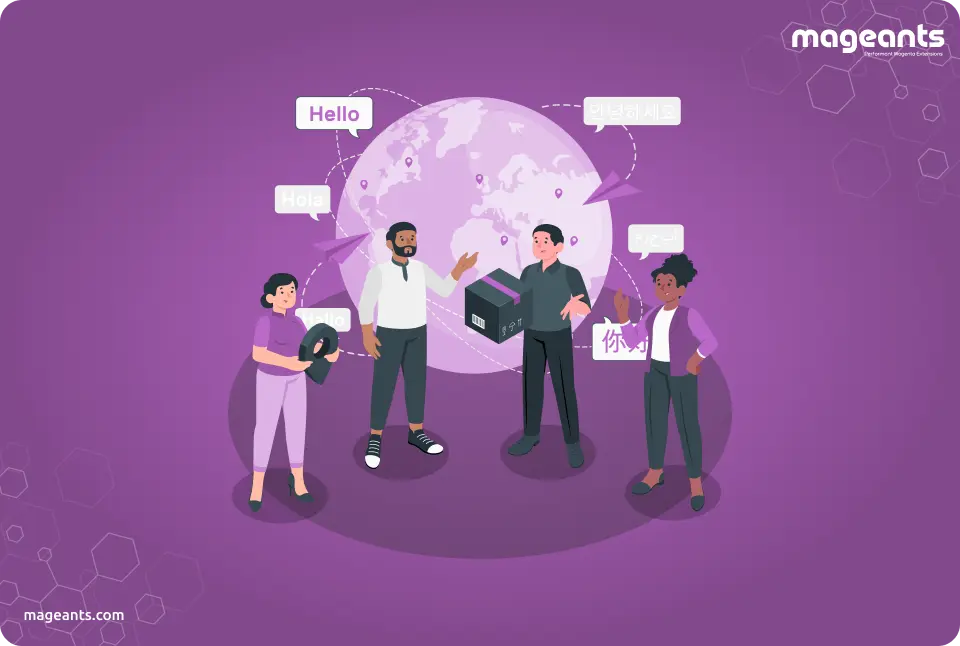
Top 7 Magento 2 Migration Issues And Their Solutions

Are you planning to migrate to Magento 2 after the end of support for Magento 1? If yes, then you might face a few Magento 2 Migration Issues. Some business owners still have doubts about migrating to Magento 2 because of these challenges to be faced post-migration.
But there are a lot of reasons why should store owners prefer to migrate to Magento 2. Magento 2 is one of the best platforms in terms of security, performance, advanced features, themes, and much more compare to Magento 1.
There are so many factors that will eventually change after Magento 2 migration. To know more, you can go through our detailed blog, where we have specified the Things That Will Change If You Shift To Magento 2 From Magento 1.
Check out the solutions recommended by experts to avoid trouble and experience a hassle-free Magento 2 migration.
Some Major Challenges of Magento 2 Migration

Security Issues
eCommerce websites are always a target for hackers as they own the financial and personal details of customers. A hacked website can lead to fraud, data leakage, and loss of customers. You may also have to pay hefty fines for every stolen record and face suspension of your merchant site. So security should be considered the top priority in the list of Magento 2 Migration Issues. A few of the common security issues are customers’ information getting leaked, Malicious redirects, leakage of credit cards and payment details, store defacing, etc.
Solutions:
- Use the latest version of Magento 2 for migration.
- Perform regular security audits to scan malware and virus.
- Remove unnecessary permissions and install necessary security patches.
- To check PCI compliance, take audits of your payment providers.
- Avoid low-quality third-party extensions and purchase them from trustworthy vendors.
- Address Magento experts and get help from Magento professionals to develop custom modules for your store, can fix critical issues, and protect your website from hacks and malware.
Read our comprehensive blog on Magento 2 security tips to protect your online store.
Performance Issues
During Magento 2 Migration, experiencing website performance issues is very common, which directly lower the speed of the website. Magento 2 is highly focused on its optimized speed and better performance. Sometimes it might be due to poor migration, and sometimes the system requirements are not as required.
Some of the most popular performance challenges that can be faced post-migration are:
- Insufficient speed in Admin areas of Magento 2
- Unacceptable search speed
- Cache configuration is not optimized
- Inefficient database setups
- Poor cron job schedules
- Low store reliability
Solution:
You can handle this using below Magento 2 performance optimization tricks:
- Until you complete the migration, you can optimize the online store by improving the time to first byte (TTFB), considering a content delivery network (CDN) plan, avoiding the use of JS Bundling, and augmenting CSS delivery.
- You can inform your customers about your migration plan and let them know that website speed will be a bit slow during migration. Don't forget to mention that this is just a temporary thing, and they will get a much better customer experience once the migration gets completed.
- You can choose the off-season to plan and execute the migration of your website.
SEO Issues
SEO is like everything for any eCommerce website, so it's very crucial to maintain search engine ranking. Without Search engine visibility, you cannot survive in this digital world. After a Migration from Magento 1 to Magento 2, it could be possible that have adverse effects on your search engine rankings and your store may experience a bit fewer sales and less traffic. It can be due to duplication of content, due to the makeover of the store, and changes in URLs. All this can negatively impact rankings. Ignoring these factors can be harmful to your business and can lead to an improper Magento 2 Migration, which can cause the SEO ranks to drop.
SEO challenges you need to take care of are:
- Double indexing or Duplicate Content due to HTTP and HTTPS versions
- Page Rank drops due to URL changes
- Improper redirects from old web pages to new pages
- SEO issues for localization and multi-store view
- Creating a redirect chain
- Improper robot.txt screening
Solutions:
These issues can be properly taken care of, with the help of some handy tips listed below:
- Prevent unexpected falls in SEO rankings by choosing an appropriate time for website migration because if your website receives a 404 error during seasonal peaks then visitors will abandon it. So the timing of the website migration is very critical because website traffic has a direct impact on your SEO ranking.
- Choose the right Magento SEO consultant for Magento 2 Migration who has expertise and experience in numerous migration projects.
- Design an SEO-friendly URL and include keywords in the primary URL to boost SEO value and rankings.
- Use online indexing tools to index your website and resolve the issues found.
- Use Analytics and Search Console to track and analyse the data.
All these tips will not only save you from a lot of trouble, but they will help you to engage potential clients by maintaining higher search engine rankings.
Also Read:- How To Avoid SEO Traffic Loss While Migrating To Magento
UX/UI Issues
There are possibilities that the themes or extensions used in Magento 1 store are not compatible or may not function properly with Magento 2 migration. As a result, store owners face compatibility issues and additional expenses, and customers have struggled with shopping and checking out.
To achieve the desired user experience, we have listed some of the aspects that need to be taken care of:
- Simple, Quick, and convenient single-page checkout
- Support chat functionality
- Inventory module with multi-store support
- Features like sales tax management, crucial shipping, and fulfillment are lacking
- Product reviews
- Remarketing features and functionalities like product suggestions, emails, push notifications, etc.
Solutions:
- Integrate specific tailored and advanced third-party extensions.
- Customize with unique solutions to power up your Magento 2 store.
- Transform your store into a better-optimized eCommerce website.
- For a stronger online presence, fix some design flaws and revamp the layout
- Try to notify customers about changes via email, social media, or a welcome page, so they are not stunned by the new design of your website.
- Add discounts, coupons, and special offers to welcome your online store’s new appearance.
Theme/Extension Compatibility Issues
If you’re using a custom theme in your Magento store or the Magento 1 extension(s) which may not exist in Magento 2, then you may face challenges while migrating your website from Magento 1 to 2. Inconsistencies in their versions may result in poor user experience (UX) because the custom theme or extension(s) that you are using in Magento 1 might be not available in Magento 2.
Solutions:
- You can search for the extension that fits well into your business requirements.
- Find themes and extensions that are compatible with Magento 2 to solve the above-listed issue.
- You can also choose a new theme and customize it as per your requirements.
- Hire Magento 2 Developers or a Development Agency for extensions and customized themes if not available in the market.
- Analyse and check the default features of the Magento 2 store, for which you required an extension in Magento 1. Later search and install Magento 2 Extensions from the marketplace except those.
Data Migration Issues
For any eCommerce website, data is the most important thing. And let us inform you that it is not an easy task to transfer all your data from Magento 1 to Magento 2. There are high chances of misconfiguration of the setup or losing some data in this process. And if losing any kind of crucial data on your website, it could result in losing customer trust and a lot of money. Make sure all the previous records of customer's order, login data, content, and CMS pages must be securely transferred as they are from Magento 1 to Magento 2. Also, if your website is too old, there are chances of data structure challenges during Magento 2 migration.
Solutions:
- Get a Magento migration consultant who can help you with secure data migration.
- Back up your data in several locations to avoid losing data.
- You can also divide your data into parts and migrate them from most to least important block after block.
- Use an official tool called the Magento Data Migration Tool to perform the data migration process without any hiccups.
- Perform a site audit to determine whether migration scripts need customization or not.
Price Issues
One of the reasons that keep holding store owners from shifting to Magento 2 is the higher cost associated with the Magento 2 migration process. One can choose one of several Magento editions based on extensions, themes, business needs, etc.
Solutions:
- Dig deep into all the possibilities Magento 2 offers and the price for each of the extensions & themes.
- Only consider the functionalities, features, and maintenance that your website actually needs.
Wrap Up
For any eCommerce business, migrating to Magento 2 is a big step! As you can see, there may be many unexpected challenges you have to face after you’ve upgraded from Magento 1 to Magento 2. Magento 2 Migration Issues may be frightening. But you have solutions for these issues too which can help you achieve endless benefits that Magento 2 and as long as you have a team of experts to help and fix things up, you’re good to go.
Looking for Magento 2 migration service? Contact us and talk to our experts to know more.
